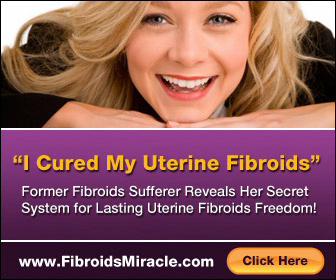Women of child-bearing age may experience a reproductive problem or two in their lifetime. Oftentimes, the problems aren’t severe and have little effect on their fertility. However, there are conditions that may start out benign but may cause reproductive damage when not immediately attended to.
One of the common reproductive problems that many women experience is the growth of uterine fibroids. Fibroids are benign growths attached to or near the uterine wall. In time, these fibroids may turn into calcified uterine fibroids, but may still cause the same extent of damage to the uterine tissues if not removed or treated.
The following FAQs will answer some of the most common questions surrounding the issue of calcified uterine fibroids in women.
How Do Calcified Uterine Fibroids Form?
Calcified uterine fibroids are normal uterine fibroids at first. They’re actually the left-over’s of dying fibroids.
A calcified fibroid forms when a uterine fibroid grows too big too fast. When it reaches its biggest size and the blood supply is no longer enough to support further growth, the fibroid starts to die.
In the process of fibroid degeneration, calcium deposits in the depleting blood start to build up within the fibroid tissue. When there’s no more blood left except the calcium build-up, it becomes a calcified fibroid.
Calcified fibroids feel harder and grainier compared to soft tissue fibroids. As the enveloping tissues die and wrinkle, the calcification is what’s left protruding from the uterine wall.
How are Calcified Uterine Fibroids Detected and Diagnosed?
Normally, the presence and growth of uterine fibroids will cause some symptoms in the body such as bleeding and localized pain around the pelvic area. But to confirm the presence of calcified fibroids, you need to undergo some non-invasive diagnostic tests.
Calcified fibroids can be detected and located using ultrasound, CT scan or MRI. Technically, what is used to detect normal uterine fibroids is also what’s used to detect calcified fibroids.
However, the difference between diagnosing a normal uterine fibroid and a calcified fibroid is the patient’s symptoms. By the time the fibroids are calcified, the worst of the symptoms would have already passed. This means that before the fibroids turned to calcified fibroids, the patient may have already been experiencing symptoms for a while before the diagnosis was made.
What are the Treatments for Calcified Uterine Fibroids?
Calcified fibroids would normally need to be removed or treated. This is especially true if the fibroids are large and or are threatening the patient’s fertility.
The usual treatments for fibroid removal include the following:
- Myomectomy – This is the surgical removal of the fibroid tissues from the uterine tissues. The uterus and other parts are left intact during this procedure, so the patient may remain fertile and can still conceive children.
- Endometrial ablation – This involves the removal of the lining of the uterine wall along with the fibroids. This is required if multiple fibroids are embedded into the lining tissues. The patient will no longer be able to conceive children after this procedure.
- Hysterectomy – This is the surgical removal of the uterus. This is required if the fibroids are too large and are embedded deeply in the uterine wall. Conception is impossible after this procedure.
- Myolisis – This is a modern technique that involves the use of freezing or electric emission to destroy the fibroid tissues. The procedure uses a needle to transmit electric current into the fibroid tissues, much like cauterization.
The kind of treatment prescribed for a patient will depend on the number of fibroids present and the size and depth of the growths. The patient’s desire to have children or not is also taken into account.
However, if the calcified fibroids detected are found to have little effect on fertility or the integrity of the uterine wall, the patient can choose to wait it out. Calcified fibroids, in time, may separate from the uterine wall and be passed out of the body with the menses. This is likely if the fibroids were only superficially attached to the uterine wall in the first place.
If you are experiencing some symptoms and suspect having fibroids, you should seek medical advice immediately. Prompt diagnosis and treatment are crucial especially when you plan to have children in the future.


